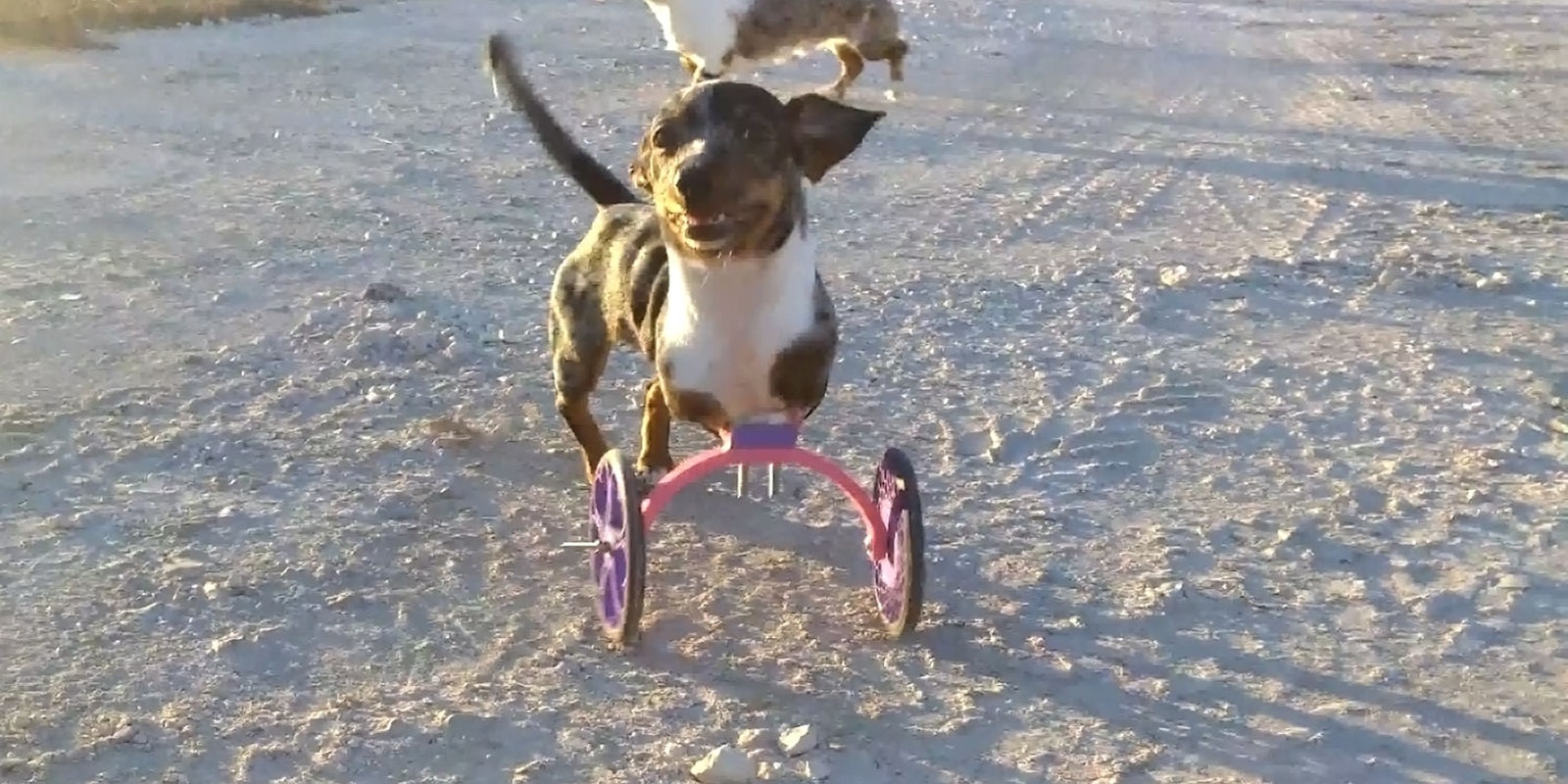When Trevor Byers purchased a 3D printer, he only had one purpose in mind: to give his little dachshund Bubbles the ability to move independently.
Bubbles was born without her two front legs, and after researching different wheelchairs, Byers and Elissa Smoak decided to 3D-print their own chair, they told 3ders.org.
With a combination of a carbon fiber and 3D-printed parts, the couple created a wheelchair for Bubbles that was not only less expensive to create than traditional dog wheelchairs (which can cost a few hundred dollars), but also lighter weight, so the little pup can move around quickly and comfortably.
So other disabled dogs can regain their mobility, Byers uploaded the design and materials to MakerBot’s Thingiverse website, so anyone can download the open-sourced design. The pair is also giving the newly-created wheelchair to other furry friends.
Byers told 3ders.org, he “loves the freedom that it has given her.”
Through 3D-printing, medical products and prototypes have improved the lives of many different patients—including 3D-printed tissue, and model tumors that have helped save patients’ vision.
Now, even dogs can enjoy the medical benefits of 3D-printing. And Bubbles can run and play with her fellow pups.
H/T CNet | Photo via Elissa Smoak/YouTube


